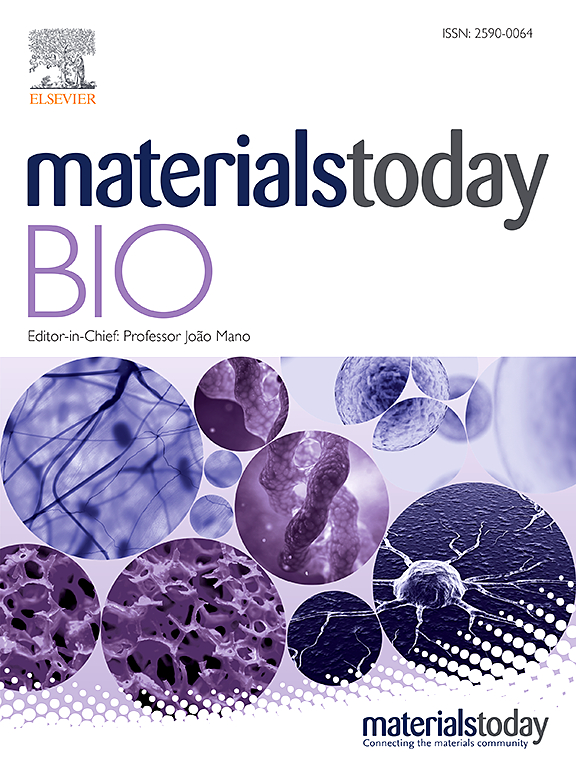pH-responsive nanovesicles capable of remodeling the tumor microenvironment enable activatable near-infrared-II fluorescence image-guided enhanced radiotherapy
IF 8.7
1区 医学
Q1 ENGINEERING, BIOMEDICAL
引用次数: 0
Abstract
Traditional radiotherapy (RT) lacks the precision to distinguish between tumor and normal tissues, leading to inevitable X-ray-induced side effects in patients. Therefore, it is crucial to develop integrated imaging and therapeutic modalities that can reduce side effects on surrounding healthy tissues while enhancing susceptibility to tumor tissues. In this study, we developed a pH-responsive nanodrug (AuNRs-Mn3O4-Ag2S Ve) by self-assembling the second near-infrared (NIR-II, 950–1700 nm) fluorescent probe Ag2S quantum dots (QDs), multifunctional nanozyme Mn3O4 nanoparticles (NPs), and radiosensitizer gold nanorods (AuNRs) into a single nanoplatform via an emulsion process. This nanodrug enables precise tumor localization for accurately guided RT and multi-angle sensitization of RT. Upon intravenous administration, the nanodrug disintegrates in the tumor area due to the pH-sensitive polymer P4VP, releasing Ag2S QDs which are specifically activated by the acidic environment, thereby “turning on” the NIR-II fluorescence signal. The optimal timing of the NIR-II fluorescence signal within the tumor region after intravenous injection was investigated, providing a reference for guided RT. In vitro and in vivo experiments confirmed the efficient enhancement of tumor radiosensitization by AuNRs and Mn3O4 NPs. The specific imaging modality that transitions the fluorescence signal from “off” to “on” has been successfully implemented, addressing the limitations of conventional RT and enhancing radiosensitivity. The integration of imaging and therapeutic approaches in this study presents a promising modality for image-guided tumor RT.

求助全文
约1分钟内获得全文
求助全文
来源期刊

Materials Today Bio
Multiple-
CiteScore
8.30
自引率
4.90%
发文量
303
审稿时长
30 days
期刊介绍:
Materials Today Bio is a multidisciplinary journal that specializes in the intersection between biology and materials science, chemistry, physics, engineering, and medicine. It covers various aspects such as the design and assembly of new structures, their interaction with biological systems, functionalization, bioimaging, therapies, and diagnostics in healthcare. The journal aims to showcase the most significant advancements and discoveries in this field. As part of the Materials Today family, Materials Today Bio provides rigorous peer review, quick decision-making, and high visibility for authors. It is indexed in Scopus, PubMed Central, Emerging Sources, Citation Index (ESCI), and Directory of Open Access Journals (DOAJ).
 求助内容:
求助内容: 应助结果提醒方式:
应助结果提醒方式:


